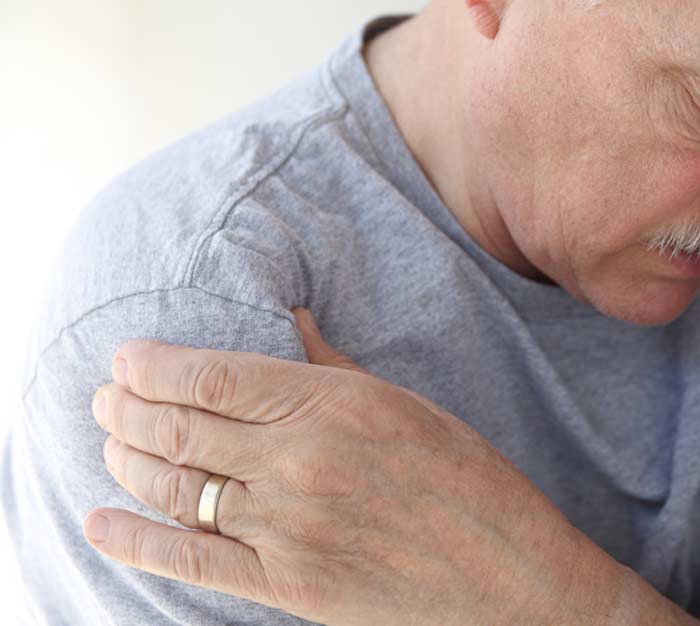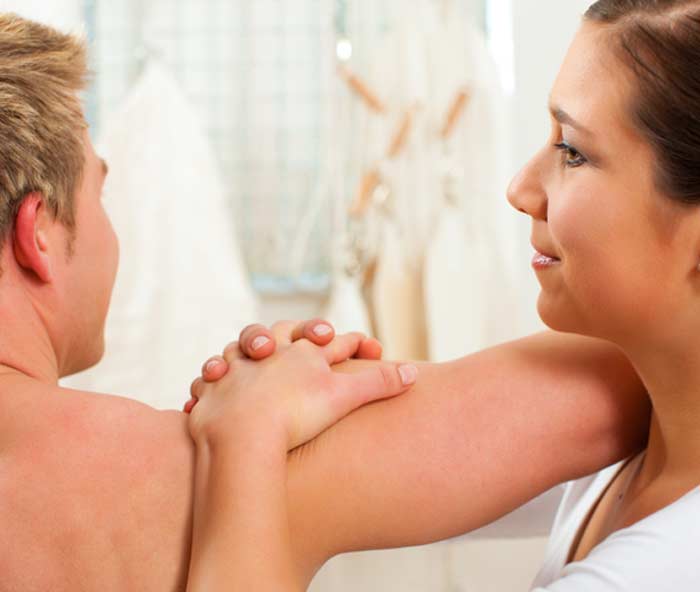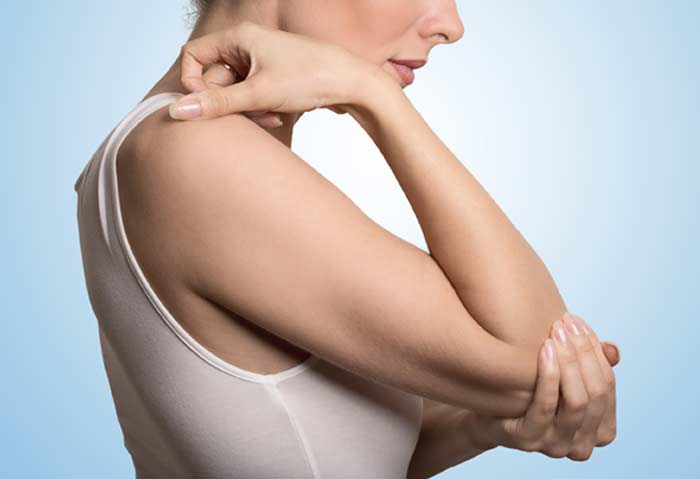
Bursitis occurs when the bursa sacs become inflamed.
The bursasacs work to cushion tendons, muscles, and bones near the joints. The elbow, shoulder, and hip are the most common areas for this condition to occur.
Repetitive positions and motions are the most common cause for bursitis. Examples include:
- Prolonged leaning on the elbows
- Repeatedly lifting the arms above the head
- Extensive kneeling on the floor
As patients get older, bursitis tends to be more common. Those with gout, rheumatoid arthritis, and certain other systemic diseases tend to be more prone to developing this condition. The risk of knee and hip bursitis is typically higher in people who are overweight.
Symptoms
When bursitis is present, the affected joint may be stiff or achy. It might also be red and swollen. When pushing on the joint or moving it, it tends to hurt more. If the following symptoms occur, it is important to see a doctor right away:
- Disabling joint pain
- Excessive redness, bruising or swelling
- Rash in the affected area
- Sudden inability to move the affected joint
- Fever
- Shooting or sharp pain


Diagnosis
In most cases, the doctor will perform a physical examination, learn about the patient’s lifestyle and take a medical history to make a diagnosis. Most patients can be accurately diagnosed based on these alone. However, additional testing might be necessary in some cases. These may include:
- Imaging tests to exclude other conditions that could be causing a patient’s pain. These tests might include a general X-ray, MRI or ultrasound.
- Certain lab tests might aid the diagnosis. To better pinpoint the source of a patient’s pain and inflammation, doctors might want to analyze a fluid sample from an affected bursa.
Treatment
For most patients, conservative measures are adequate for healing bursitis. This often includes resting the affected joint and applying ice. Depending on the joint, gentle compression might be beneficial. The joint should also be elevated if possible.
There are times when conservative measures do not help. For these patients, doctors might recommend several different medical treatment options. Medications are often tried first. This usually includes those that work to calm inflammation, such as nonsteroidal anti-inflammatory drugs. However, certain cases of bursitis are due to an infection, so antibiotics are given to treat it.
Physical therapy might be helpful. This includes targeting the muscles around the affected joint to strengthen them. This can prevent recurrence and decrease pain.
Injecting corticosteroids into the affected bursa can help to alleviate pain and inflammation. This is most commonly performed for hip or shoulder bursitis. In most cases, the relief comes on quickly. Patients typically only need one injection.
To alleviate pressure on the affected joint, doctors might recommend short-term use of an assistive device. Examples include canes, crutches and walkers. While not as common, some patients may benefit from surgery. This can be done to drain or remove an affected bursa.
